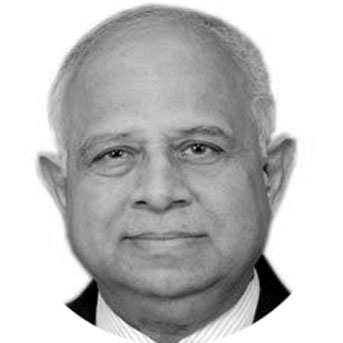Why not Khalistan ?
SIKHS are followers of a monotheistic religion – Sikhism – that originated in the 15th century in the Punjab region of the Indian subcontinent.
One could understand the need for this new religion as the need to uncover the basic truth that over the centuries had been submerged under ‘meaningless rituals’ in earlier religions had established in the subcontinent.
When studying Sikh major scriptures, such as the “Adi Granth” or the “Dasam Granth” one finds references to Hindus and Muslims that convey one message: that of the unity of mankind under one God.
But this fundamental truth is concealed by meaningless doctrines and rituals, which artificially divide mankind.
One of the most forceful expressions of this irenic belief is to be found in a famous passage of the Dasam Granth: “Some are called Hindus, others are Muslims, members of sects such as Shia or Sunni. Let it be known that mankind is one, that all men belong to a single humanity.
So too with God, whom Hindu and Muslim distinguish with differing names. Let none be misled, for God is but one; he who denies this is duped and deluded.”
This amazing truth, over more centuries, has been again covered by many meaningless rituals and doctrines within Sikhism itself with the result that Sikhs today form another clearly segregated community in the subcontinent.
Ruled by the Sikhs for significant parts of the 18th and 19th centuries the Punjab in northwest India has a majority Sikh population, sizeable communities of Sikhs exist around the world.
In 1920 the Akali Dal was founded as the political representative of the Sikh community under its leader Tara Singh.
The months leading up to the 1947 partition of India were marked by a tussle between the Indian National Congress (INC) led by Jawaharlal Nehru and the Muslim League (ML) led by Quaid-e-Azam Muhammad Ali Jinnah for their support in the negotiations about partition lines.
Nehru is on record of having promised a Sikh state, probably within the Indian Federation in return for Sikh political support during the partition negotiations.
On behalf of the ML the Quaid offered very generous terms to the Sikhs (Master Tara Singh, Maharaja of Patiala and others) to dissuade them from demanding the partition of the Punjab if India was partitioned.
He offered that a Sikh state would be independent and consist of unpartitioned Punjab minus one or two southern districts.
Traditionally closer to the Congress the Sikh leaders did not take this offer, one factor was their apprehension whether Pakistan would follow through with the plan in case of the Quaid’s demise.
This offer throws an interesting light on Quaid-e Azam’s ideas about partition and his vision about the future of the subcontinent.
During the months leading up to partition in early 1947 he had agreed to the suggestion of Fazlul Haq and Suhrawardy for an independent Bengal comprising of an undivided Bengal and Assam.
In his policy statement as President of the All-India Muslim League on June 17, July 11 and again on 30 July 1947 the Quaid stated that Indian princely states had every right to declare independence in addition to their right to join India or Pakistan. That kept the option for an independent Kashmir open.
Just imagine a subcontinent with Pakistan, Kashmir, Punjab and Bengal – including the seven sisters, i.e. Nagaland, etc. Such a vision put the Quaid much ahead of his time. Missing this a historic opportunity is now a cause of regret for a vast majority of Sikhs.
The 1960s saw growing animosity between the Hindus and Sikhs because of Sikhs demanding the creation of a Punjabi state on a linguistic basis similar to other states in India.
To partially fulfil the Sikh demands Chandigarh was made a union territory in 1966 as the capital of both Punjab and Haryana. That did not satisfy the Sikhs.
Sikh leader Jarnail Singh Bhindranwale who was initially supported by Sanjay Gandhi eventually triggered armed struggle for a fully autonomous Punjab.
Earlier in Nov 1982, Soviet Union leader (and former Head of KGB) Yuri Andropov approved fabrication of Pakistan intelligence documents detailing ISI plans to create an independent Sikh state.
This disinformation including purported secret CIA support for the Sikhs was taken seriously by Indra Gandhi.
When the negotiations with the militants failed the Indian PM ordered the launching of “Operation Blue Star” to rid the well-fortified Golden Temple of militants led by Jarnail Singh Bhindranwale, Amrit Singh and retired Maj Gen Shabeg Singh.
Simultaneously they were to clean out militants from many dozens of Sikh Temples across Punjab.
Lasting from June 1 to June 10, 1984, the actual assault started on June 3, 1984. Fiercely defended by the Sikhs the army gained control of the Gurdwara after a 40 hours firefight.
The official casualty army figures were 83 soldiers dead and 249 injured; however, Rajiv Gandhi disclosed in September 1984 that 700 soldiers were killed.
The real mystery is why the Indian Army permitted 3000 pilgrims enter the Golden Temple on this day, the martyrdom of Guru Arjan, the founder of Harmandir Sahib and then seal it off. Several hundred people lost their lives. —To be continued.
—The writer is a defence and security analyst.










